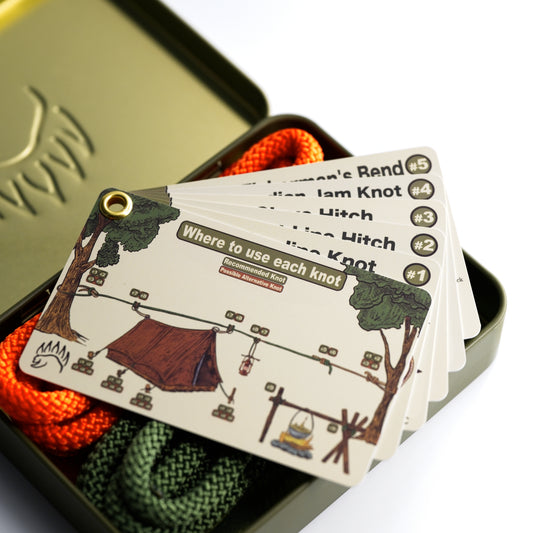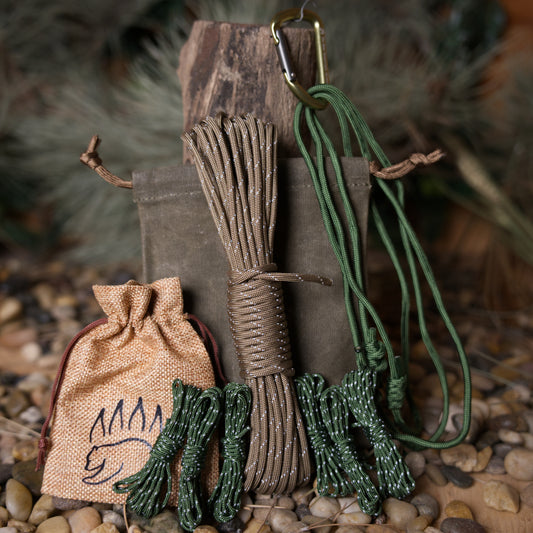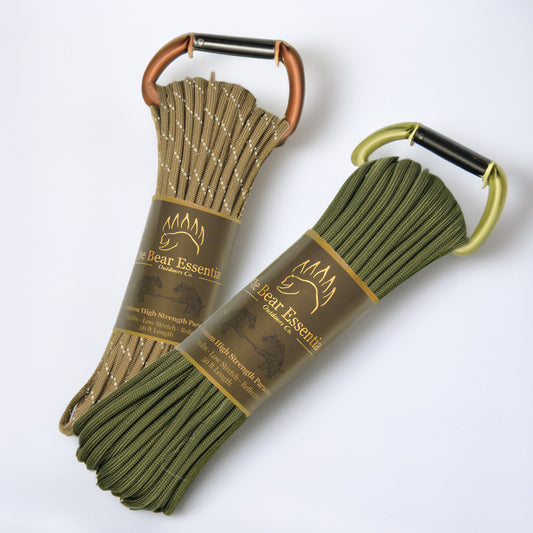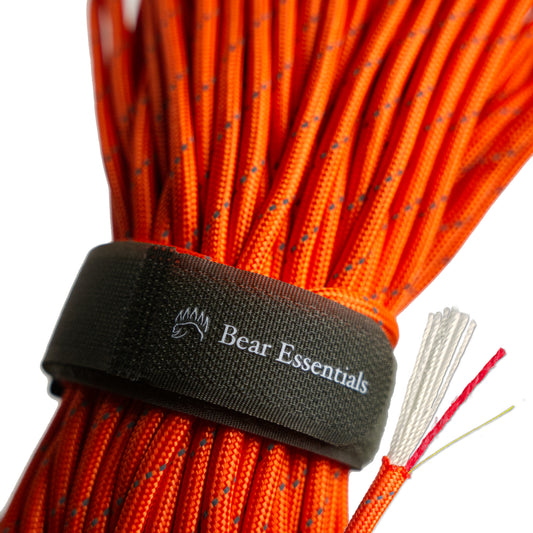How to Tie the Round Lashing
Usage
The Round Lashing is commonly used to bind two parallel poles together in scout pioneering projects, bushcraft shelters, and camping setups, creating a strong, stable joint. Compared to the Square Lashing, it’s simpler and better suited for poles that bear weight along their length, like ladder rungs.
Why Learn the Round Lashing?
Its straightforward design ensures strong pole binding. This knot is a go-to for scouts and bushcrafters needing durable structures.
Common Uses
-
Scouts:
- Binds poles for ladder rungs or pioneering structures.
- Secures frameworks for camp furniture or flagpoles.
-
Bushcraft:
- Constructs shelters by binding poles for supports or beams.
- Creates frames for gear storage or drying racks.
-
Camping:
- Ties poles for temporary shelters or cooking tripods.
- Secures parallel stakes for camp organization.
ABOK Number
(Ashley Book of Knots)
Other Names
Category
|
Notable Features
- Strong hold: Creates a tight, stable joint for weight-bearing poles.
- Simple to tie: Forms quickly with basic wrapping technique.
- Versatile use: Suits ladders, shelters, or camp furniture.
- Minimal rope use: Requires less cord than complex lashings.
- Scouting staple: Standard for pioneering projects like bridges.
Variations
No true variations listed in the provided data. For added security, you can add extra frapping turns, though this may increase rope use.
Similar Knots
Square Lashing vs. Round Lashing
- Pros: Better for perpendicular poles in complex frameworks.
- Cons: More complex and less suited for parallel poles than the Round Lashing.
Shear Lashing vs. Round Lashing
- Pros: Allows poles to pivot, ideal for A-frame structures.
- Cons: Less rigid and not suited for fixed, parallel joints.
History
The Round Lashing, referenced in The Ashley Book of Knots (#2114), likely originated in maritime and early scouting traditions where binding poles was essential for rigging and pioneering. Its simplicity made it a staple in scout training for building ladders and frameworks. Its use in bushcraft and camping reflects its effectiveness for creating stable, weight-bearing structures.
Security Level
The Round Lashing provides reliable binding for parallel poles when tied with tight, even wraps, holding firm under moderate loads in structures like ladders or shelters. It performs best with strong, non-stretch ropes and proper frapping turns. For heavy loads, ensure extra wraps and tight frapping to prevent loosening.
Downsides
- Tension dependent: May loosen if wraps are not tight or frapping is weak.
- Learning curve: Requires practice to achieve even, secure wraps.
Structure
- Place the two poles parallel, touching or slightly apart.
- Start with a clove hitch around both poles at one end.
- Wrap the rope tightly around both poles 6–8 times, keeping wraps even.
- Finish with two frapping turns, wrapping the rope between the poles to tighten.
- Secure with a clove hitch or square knot and test the joint’s stability.
Pro Tip: Pull each wrap tightly to ensure a snug, stable joint. Use a strong, non-stretch rope like sisal or nylon for durability. Space wraps evenly to distribute pressure across the poles.
FAQ
Is the Round Lashing strong enough for heavy structures?
Yes, for scout ladders or shelters, but ensure tight wraps and strong rope.
What’s the best rope for the Round Lashing?
Sisal, nylon, or polyester ropes with low stretch, like 6–8mm, are ideal.
How does the Round Lashing compare to the Square Lashing?
The Round is simpler for parallel poles, while the Square suits perpendicular joints.
Can the Round Lashing be used in camping?
Yes, it’s great for binding poles for shelters or tripods.
Why choose the Round Lashing over a Shear Lashing?
It’s better for fixed, parallel poles, while Shear Lashing allows pivoting.
Important Notes on Safety
Common failure points include loose wraps or weak frapping turns, which can cause the lashing to slip. Always verify the lashing is tight and the poles are secure before loading. Check poles for cracks or instability before binding. Ensure 6–8 tight wraps and at least two frapping turns for strength. Practice in low-stakes settings to perfect the technique.







